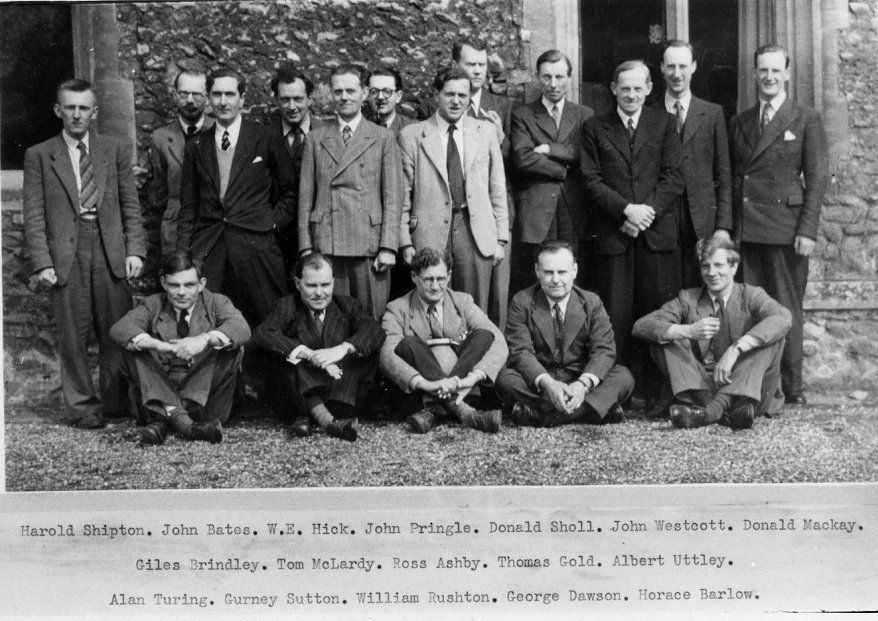HISTORY OF GENERATIVE ART - British Cybernetics
In our History of Generative Art series, we now focus on British cybernetics, which began influencing art and education in the mid-to-late 1950s. As cybernetics developed as a field, its principles found applications beyond science and engineering. In Britain, these ideas became particularly prominent in art schools, where many artists and educators began exploring systems thinking, feedback loops, automation, and the relationship between human perception and technology
Gordon Pask, Musicolour, 1953–57, Source: Pask: Comment 1971, p.85, fig.31.
Cybernetics is the study of communication and control in both machines and living systems, emphasizing feedback mechanisms and self-regulation. Developed by Norbert Wiener in the late 1940s, it explores how systems process information and adjust to change. This provided a theoretical framework that allowed artists to explore interactive and systematic approaches to art.
The Independent Group w/ P. Smithson, E. Paolozzi, A. Smithson, N. Henderson, 1956, Source: researchgate.net
Members of the Ratio club, Source: researchgate.net, Courtesy Wellcome Library for the History and Understanding of Medicine.
One of the most influential groups in British cybernetics was the Ratio Club, started in Cambridge in 1949. The club brought together psychiatrists, neurologists, mathematicians, engineers, and other scientists to discuss information processing in brains and machines. Members included Alan Turing, Jack Good, Ross Ashby, Grey Walter and many more.
The influence of cybernetics on British art emerged in the mid-to-late 1950s, particularly among artists affiliated with the Independent Group, one of the first in the UK to explore mass media, technology, and popular culture. Key members, including Richard Hamilton, Nigel Henderson, Eduardo Paolozzi, and John McHale, saw science and technology as shaping visual culture. An early example is Hamilton’s Man, Machine & Motion (1955), which examined human-machine relationships in areas like space exploration and underwater diving.
Roy Ascott with students at Ealing Art School, 1963, Source: npg.org.uk
British art schools played a key role in integrating cybernetics into art. Richard Hamilton’s Basic Design course at King’s College was influenced by Bauhaus principles and technology. His student, Roy Ascott, expanded these ideas at Ealing Art School, developing the Groundcourse, which emphasized systems thinking, interactivity, and audience participation. He later introduced a similar program at Ipswich Civic College, where educators like Stephen Willats and Stroud Cornock further explored audience engagement and technology. By the late 1960s, polytechnics merged art and technology, encouraging interdisciplinary collaborations.
Gustav Metzger was an important figure in early cybernetic and computer-controlled art. In 1961, he wrote a manifesto about the use of automated, computer systems in artistic creation. His work explored self-regulation, feedback loops, and destruction as a creative process. One of his pioneering pieces, Five Screens with Computer, was an environmental installation where computer-controlled screens dynamically altered their visual content. Unfortunately, due to the high costs, the project was never realized.
Gordon Pask, The Colloquy of Mobiles, 1968, Source: medienkunstnetz.de
Another pioneer of the UK cybernetics movement was Gordon Pask. His MusiColour Machine (1953) was an interactive light display that responded to live music. The system adapted over time, encouraging performers to change their behavior to elicit new visual effects. His later work, Colloquy of Mobiles (1968) was an interactive installation that featured mobile robotic sculptures that communicated with each other and with the audience through light and movement.
Stephen Willats also integrated cybernetics, systems theory, and audience participation into his work. One of his key works, Meta Filter (1973-75), was an interactive installation that explored how people perceive and process visual information. By incorporating decision-making processes and adaptive responses, the piece used real-time audience input to modify its structure.
Cybernetic Serendipity was the first major international exhibition focused on cybernetic art, held at the Institute of Contemporary Arts in London in 1968, curated by Jasia Reichardt. It showcased works that incorporated automation, generative processes, and interactive systems. The exhibition featured artists, engineers, and scientists, including Gordon Pask, Nam June Paik, Nicolas Schöffer and Edward Ihnatowicz.
British cybernetic art introduced a new way of thinking, viewing art as a dynamic, interactive system with feedback between creator and audience. This legacy continues to shape contemporary digital and generative art.
Stephen Willats, Meta Filter, 1973-75, Source: stephenwillats.com
Cybernetic Serendipity at the Institute of Contemporary Arts in London, 1968, Sources: medienkunstnetz.de







